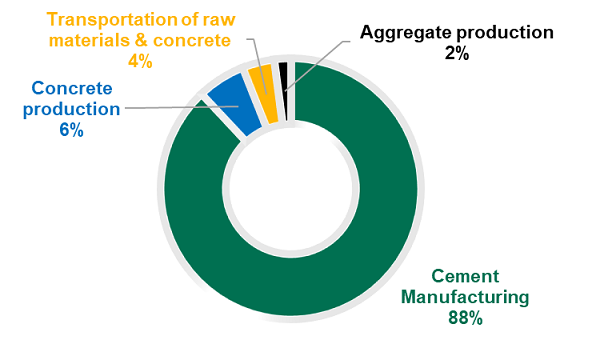09 January 2023
Innovation
Towards a Better World of Infrastructure with Green Concrete

Abhishek Bhattacharya, Managing Director, Betolar India Pvt. Ltd., examines the optimal global green alternatives for the cement & concrete industry and re-imagines how they could be leveraged in India
Decarbonization has been a buzzword for the concrete and cement industry for a prolonged time now. Consumers are increasingly becoming more aware of sustainable green choices, which in the cement industry would mean green buildings with low carbon solutions and circular economy.
Correspondingly, decarbonisation initiatives are already underway in the cement and concrete sector due to global and national climate targets. Low-carbon concrete solutions that reduce the amount of cement and CO2 emissions in concrete products are seen as the key alternative.
With the use of SCMs (Supplementary cementing materials, that contribute to the properties of hardened concrete) and other decarbonisation initiatives, the cement sector has already been able to reduce CO2/t of cementitious materials by 22% since 1990 and increased energy efficiency by 19% (Source: Global Cement and Concrete Association: 2020 cement industry GNR data). The more eco-friendly CEM3 products containing less than 45 per cent cement are also being increasingly introduced. Additionally, there has been an increase in thermal substitution rate (TSR) by alternate fuel resources and process-only carbon captureutilisation and storage (CCUS), re-carbonation and mineralisation.

Other initiatives to reduce carbon footprint include the use of a more energy-efficient waste heat recovery process and the introduction of low carbon cement products such as Portland Limestone Cement (PLC), calcined clay cement (LC3) and PSC using activators. There are, however, further CO2 emission reduction possibilities with the use of alkali-activated technologies. Collaborative research between a few universities and corporate firms to find different geopolymer solutions have demonstrated the readiness of the industry to keep seeking novel ways to use geopolymers more successfully in concrete manufacturing.
A case study with Finnish company Betolar
Betolar has introduced Geoprime® solution, which is an alkali-activated technology that can replace as much as 100% cement in concrete. The solution uses widely available side streams like fly ash, GGBS or metakaolin and helps to dispose of a variety of side streams leading to CO2 reduction in concrete. Betolar’s innovation is the next-generation, low-carbon solution and a sustainable alternative to cement. The solution’s durability and strength properties are comparable to cement-based products, but the Geoprime® enables a significantly lower carbon footprint.

100% cement-free alkali-activated solutions can currently be applied to non-structural applications. Products which can already be produced with geopolymer concrete are pavers, concrete blocks (normal and hollow), Autoclave Aerated Concrete Blocks (AAC), kerbstones, u-drains, retaining walls, concrete pipes, hollow core beams and slabs, urban and rural roads, walling and floor screeds and dry mix mortar. Future developments include ready-mix concrete and structural applications.
Betolar has been working with companies in Europe and Asia to create green concrete products together. The process of manufacturing green concrete starts with testing at Betolar’s own laboratory in Finland, where the formula recipe for the required application is created. Thereafter, testing is done at the customer’s production facilities, and the formula recipe is tweaked accordingly. The secret of Geoprime® is in thorough testing, tailoring of the recipe, utilisation of high R&D and piloting competence.
In a collaborative move, Betolar has recently expanded to the Indian market, where there has been an overwhelming interest towards green concrete solutions. Betolar’s first customers here have started manufacturing green concrete products.
Towards a better world of construction and infra – what is needed from India?
Indian standards for alkali-activated materials pertain to non-load bearing applications (IS 17452) is already adopted; however, India needs to urgently look at codal provisions for structural applications and introduction of geopolymers to be able to support low carbon manufacturing in the concrete industry. Geopolymers are not a new innovation in itself but were previously used by ancient Egyptians, among others. This needs to be further developed and tailored as per the current circumstances and to be customised as per individual’s needs.
As we all know, the production of cement is causing 8% of global CO2 emissions, and it is our joint effort to work together in the concrete and construction industry to be able to reduce the carbon footprint according to climate targets. With the help of different low-carbon concrete solutions, these climate targets are easier to achieve through joint efforts between the concrete and cement industry and by adopting new technologies in use.